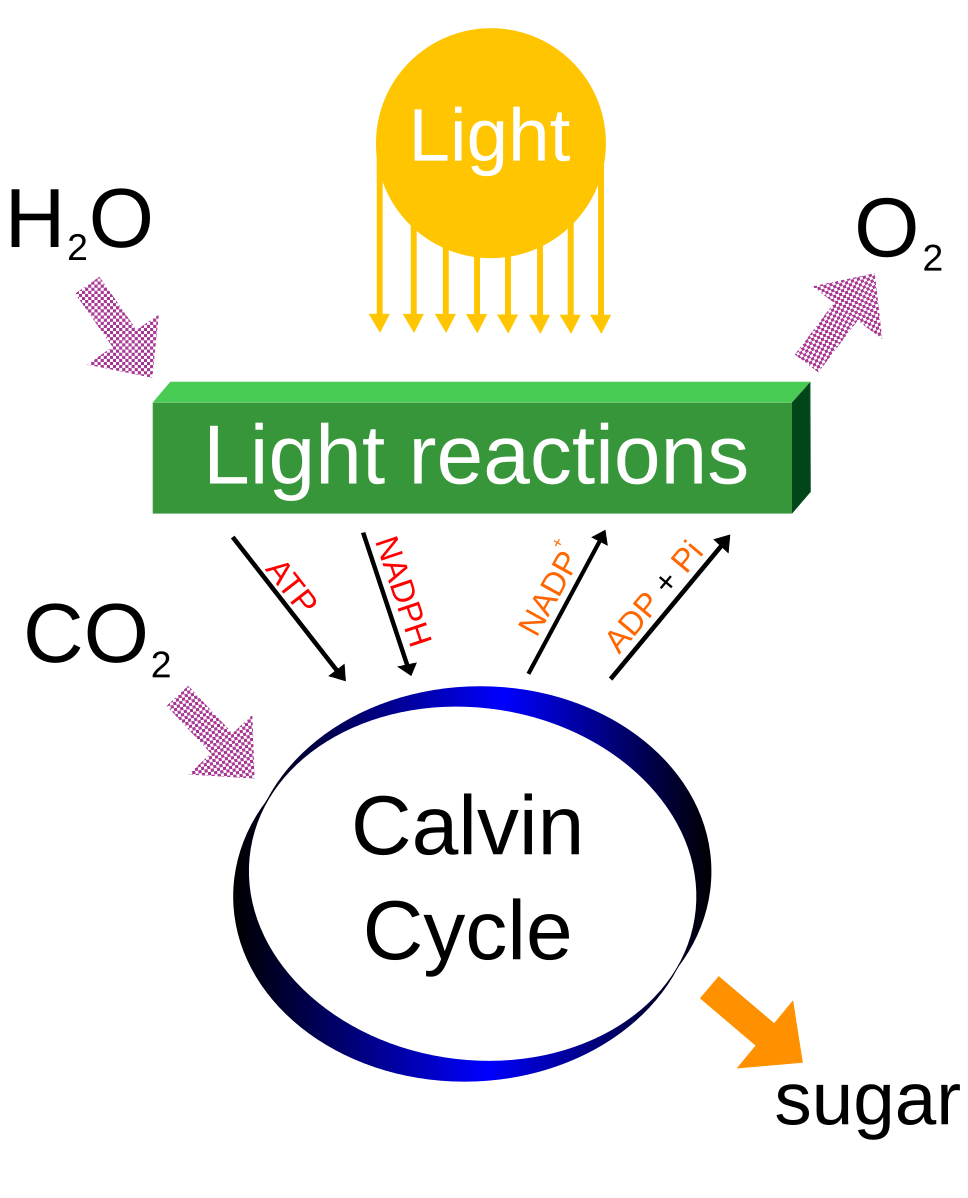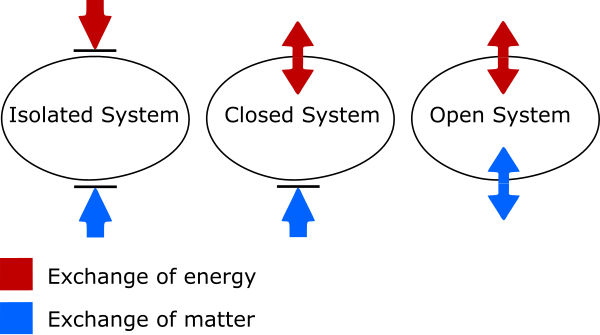IB Syllabus focus:
‘Flows are transfers (location change) or transformations (state, chemical, or energy change). Open systems exchange energy and matter; closed exchange only energy; most systems are open.’
Environmental systems function through the movement and change of energy and matter. Understanding transfers, transformations, and system types is central to grasping how ecosystems sustain, adapt, and respond to environmental challenges.
Transfers
Transfers involve a change in the location of matter or energy without altering its form or state.
Transfer: The movement of energy or matter from one place to another without changing its state, form, or chemical nature.
Examples of transfers include:
Water moving through river systems.
Soil particles shifting via erosion.
Nutrients cycling through food chains.
Energy moving from one trophic level to another in feeding relationships.
Transfers are significant because they determine the distribution of resources across ecosystems, influencing productivity and ecological balance.
Transformations
Transformations involve a change in state, chemical composition, or energy form.
Transformation: A process in which energy or matter changes state, chemical composition, or form during movement within or between systems.
Examples of transformations include:
Photosynthesis: Light energy → chemical energy.

A simplified overview of photosynthesis showing inputs (light, CO₂, H₂O) and outputs (O₂, carbohydrates), emphasising energy transformation rather than cellular detail. The clean arrows and labels match the syllabus focus on changes in energy form. Ideal for reinforcing the definition of a transformation. Source.
Respiration: Chemical energy in glucose → heat and kinetic energy.
Decomposition: Organic matter → inorganic nutrients.
Evaporation: Liquid water → water vapour.
Transformations highlight how systems process inputs to create new forms of usable energy or matter, driving ecological interactions.
Comparing Transfers and Transformations
Transfers: Movement without change.
Example: Seeds dispersed by wind.
Transformations: Movement with change.
Example: Energy conversion during digestion.
Both processes work together to maintain ecosystem stability and resilience.
System Types
Systems in Environmental Systems and Societies (ESS) are classified by their exchange of matter and energy with the surroundings.

Comparison diagram of open, closed, and isolated systems with boundary arrows indicating permitted exchanges of energy and matter. This directly mirrors ESS definitions of system types and clarifies boundary behaviour at a glance. Use it to anchor the idea that most real ecosystems function as open systems. Source.
Open Systems
Most natural systems are open, meaning they exchange both energy and matter with the environment.
Open System: A system that allows both energy and matter to cross its boundaries.
Examples:
A forest ecosystem receives sunlight (energy) and rain (matter) while releasing oxygen, water vapour, and organic matter.
A human body takes in food, water, and oxygen, releasing waste, heat, and carbon dioxide.
Closed Systems
Closed systems exchange only energy but not matter with their surroundings.
Closed System: A system that allows energy but not matter to cross its boundaries.
Examples:
The Earth is often approximated as a closed system regarding matter, since matter exchange with outer space is minimal.
The biosphere in a sealed terrarium functions as a miniature closed system, requiring only sunlight to sustain processes.
Isolated Systems
Though rare in reality, isolated systems exchange neither matter nor energy with the surroundings.
Used mainly as a theoretical construct.
No true isolated natural systems exist on Earth, though the universe as a whole is sometimes considered one.
Energy and Matter Flow in Systems
In open systems, energy inputs such as sunlight drive photosynthesis, while matter circulates through cycles like the carbon cycle.
In closed systems, matter is conserved, requiring recycling of resources for sustainability.
Isolated systems demonstrate the impossibility of ecosystems surviving without external inputs of energy.
Interplay of Transfers, Transformations, and System Types
These concepts intersect continuously in ecosystems:
A tree takes in carbon dioxide and sunlight.
Transfer: Movement of CO₂ into leaves.
Transformation: Conversion of light into glucose through photosynthesis.
The forest as an open system demonstrates the integration of energy and matter cycling, sustaining life.
Bullet point summary of interactions:
Transfers move resources around ecosystems.
Transformations change resources into usable forms.
System types determine the boundaries and conditions of these interactions.
Importance for ESS
Understanding these processes helps in:
Analysing ecosystem resilience and stability.
Predicting impacts of human activities such as deforestation or pollution.
Designing sustainability strategies by recognising system boundaries.
This subsubtopic builds a foundation for appreciating how environmental systems function as interconnected wholes, shaping the way societies manage resources and interact with nature.
FAQ
Transfers move pollutants without changing their form. For example, heavy metals may be transported by river flow, or microplastics carried by ocean currents.
This process spreads pollutants across ecosystems, increasing their environmental impact. Understanding transfers helps explain why pollutants can affect regions far from their original source.
Transformations change the form of nutrients, making them usable by different organisms.
Nitrogen-fixing bacteria transform atmospheric nitrogen into ammonia.
Decomposers transform organic matter into inorganic nutrients available to plants.
Without these transformations, key nutrients would remain locked in unusable forms, disrupting ecosystem productivity.
Earth is often considered a closed system for matter because it rarely gains or loses material from space. However, it is an open system for energy, constantly receiving solar radiation and releasing heat.
This dual character highlights how definitions depend on the type of exchange being considered.
Human interventions can alter system boundaries:
Building dams restricts water transfer, making rivers function more like closed systems.
Urban environments import large amounts of resources, intensifying their open-system characteristics.
Such activities shift how energy and matter are exchanged, often reducing system resilience.
No natural ecosystem can exist without energy input or material exchange.
Isolated systems are used in theory to illustrate extremes, helping students compare them with real open and closed systems. They also emphasise the dependence of life on continual flows of energy and matter.
Practice Questions
Question 1 (2 marks)
Define the terms transfer and transformation as used in Environmental Systems and Societies.
Mark Scheme:
1 mark for a correct definition of transfer: the movement of energy or matter from one place to another without changing its state, form, or chemical nature.
1 mark for a correct definition of transformation: the process in which energy or matter changes state, chemical composition, or form during movement within or between systems.
Question 2 (5 marks)
Distinguish between open and closed systems, giving one example of each. Explain why most natural systems are considered open.
Mark Scheme:
1 mark for stating that open systems exchange both energy and matter with their surroundings.
1 mark for stating that closed systems exchange energy but not matter with their surroundings.
1 mark for a correct example of an open system (e.g., a forest ecosystem, the human body).
1 mark for a correct example of a closed system (e.g., the Earth in terms of matter, a sealed terrarium).
1 mark for explaining that most natural systems are considered open because they depend on constant inputs (such as sunlight, water, or nutrients) and release outputs (such as waste, oxygen, or heat).

